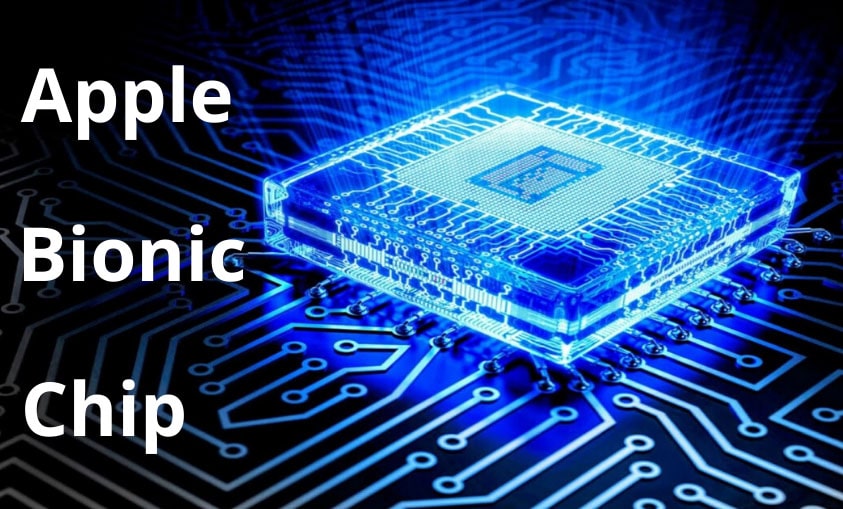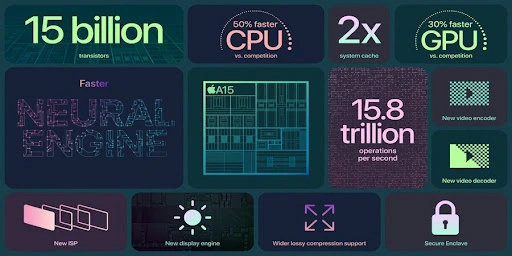Apple Silicon has been winning the race in the mobile CPU industry for some years now. It is because of the flagship grade of its chipsets. A15 Bionic is a fresh addition to Apple’s A-Series chipset list. The apple development team in its former time established its new chipset that will appear in the iPad Mini (6th generation). It will also appear in the iPhone 13 lineup. They have also declared that there is an important enhancement in the A15’s productivity in comparison to its forerunners. We are going to discuss the content of ‘A15 Vs A14 Bionic Comparison: Worth The Upgrade?’. We have made a total examination of these chipsets. So, let’s start with the blog.

Also Read: Connect Apple Watch to Fitbit app: How to do it
A15 Vs A14 Bionic Comparison: Overview
Let’s start with the CPU in this A15 Vs A14 Bionic Comparison: Worth The Upgrade. Apple brought up in its Annual Launch Event last time that A15 Bionic will be 50% quicker in comparison to its contenders. However, no differentiation charts were available to back this statement then.

On the basis of this flaw, we are going to put the A15 against Apple’s past flagship i.e., the A14 Bionic. In order to decide whether this new chipset is worth it or not.
Manufacturing Process
Both A14 and A15 Bionic are 64-bit ARM-based SoCs that are created using TSMC’s 5nm manufacturing node. It is the rearmost variation with architectural advances resulting in a performance-boosted variant of the matching 5nm procedure, dubbed N5P. This makes the A15 Apple’s first chipset to be developed with the N5P FinFET technology. Additionally, it authorizes Apple’s engineers to crate more transistors into the A15 – 15 billion transistors. There has been a substantial 27.1% growth in general transistor count from A14’s 11.8 billion.
Core Count & Clock Speeds

Let’s look into the core count now in ‘A15 Vs A14 Bionic Comparison: Worth The Upgrade?’. A15 consists of 6 cores clocking a little higher than their forerunners. There are 2 performance-oriented cores (Avalanche) and 4 energy-coherent cores (Blizzard). A14 also has the same number of cores.
- A15- P-cores (3.2GHz), E-cores (2.0 GHz)
- A14- P-cores (3.1GHz), E-cores (1.8 GHz)
So, you are not going to observe any significant difference in daily pursuits. The performance will be faster obviously in terms of gaming, etc. You can only locate the variation in relation to the battery life.
Battery Life
Now let’s move on to Battery Life on the topic of ‘A15 Vs A14 Bionic Comparison: Worth The Upgrade?’. As mentioned above, you are going to observe the difference between the battery life of these two. Let’s take the example of the iPhone 12 Pro Max and iPhone 13 pro-Max and test them on the basis of a YouTube streaming test. The former has a 3687mAh Li-ion battery which can work for 8 hours and 37 minutes. On the other hand, the latter will last extra 2.5 hours in the same test.
A15 Vs A14 Bionic Comparison: Results of CPU Benchmarking
Now we will consider the results of CPU Benchmarks on the topic of ‘A15 Vs A14 Bionic Comparison: Worth The Upgrade?’. In comparison to the A14’s AnTuTu 9 benchmark, the A15 has seen a solid performance gain of around 11%. the overall benchmark score of A15 is a whooping 798645 whereas the A14 stops at the score of 721238.
On the basis of single-core specification, the A15 obtains a 9% lead in comparison to the A14. It has a sum total of 1737 in comparison to the A14’s total of 1597. On the other hand, the multi-core specification total for A15 hangs around 15% over the A14. The score is 4755 and 4132 respectively.
You can easily see that Apple’s credentials regarding the unification of flagship hardware with an appreciable software design have been great. If you are a user who doesn’t mind all these numbers, then also you will experience a great product resulting in a satisfied customer.
A15 Vs A14 Bionic Comparison: GPU Specifications & Performance Overview
In relation to the GPU specifications, the A15 Bionic has segregated the arrangement of its GPU at the level of the chipset. The iPhone 13 Pro and 13 Pro Max have a 5-core variation in-house GPU to its SoC. On the other hand, the iPhone 13 and 13 Mini combine a 4-core custom.
As expected, the A15 reached the 3D Mark WildLife standard easily with a sum total of 9558 whereas the A14 will disappoint you in this one. The 4-core A14 was able to get a sum total of 7589 only. There is a huge 26% growth in GPU production for the A15 over its predecessors.
A15 Vs A14 Bionic Comparison: Neural Engine Improvements
Apple concentrated a lot on its upgraded Machine Learning capacities during its presentation. So, let’s discuss Neural Engine Improvements on the topic of ‘A15 Vs A14 Bionic Comparison: Worth The Upgrade?’.

A15 and A14 chipsets both contain the 16-core Neural Engine. However, Apple’s Silicon Engineering Team declared that the performance of the A15 can go up to 15.8 trillion functions p/s. It is a notable increase from the 11.8 trillion functions per second of A14. So it’s a win for those looking for its Machine Learning characteristics.
Apple has tried its best in this generational leap. We can see that the company is limiting the gap between mobile and PC chipsets. The A15 can easily become a grave competitor because of its efficient chipsets.
Conclusion
In conclusion to this blog ‘A15 Vs A14 Bionic Comparison: Worth The Upgrade?’, we can simply say that it is so. This is because A15 will bring better performance and productivity to the table. But if you are using any old model of iPhone or an iPad then there is not much need to upgrade. You won’t experience a great difference between them so, you can easily wait for some more enhancements. Thank you!
